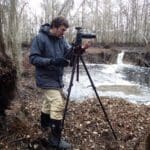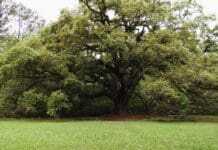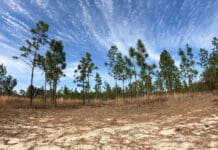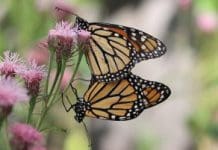As part of RiverTrek 2021, we kayak 107 miles down an iconic wild Florida river: the mighty Apalachicola This river system contains a top biodiversity hotspot, an extensive forested floodplain which is the center of tupelo honey production, Florida’s largest geological outcropping, and a wealth of plant and animal life.
A few of us are sitting around a campfire, the Apalachicola River twinkling before us under a half moon. Many of the others have gone to their tents, experiencing that pleasant tiredness that comes from paddling twenty miles a day for three days, and a 6 pm sunset. It feels like midnight, but it’s probably closer to 7:30.
As we joke and tell stories, bright spotlights shine onto us from the river; a passing boat has become curious about the tents and kayaks littering the sand bar. A couple of us return the curiosity, wading out into the shallow water for a closer look. Soon, I hear Doug Alderson call out, “Rob, bring your camera!”
When you take a trip like RiverTrek more than once, you pass all the same places. Alum Bluff, Sand Mountain, Owl Creek. And yet, every RiverTrek is different. Weather this year forced us to postpone the trip for a month, and so we’re much deeper into the yellows, reds, and oranges of fall than usual. Some years the river is lower, in others it’s high and flowing fast. We can never know what animals we’ll see or hear, though a few sights and sounds are common on the river.
And then there are the people, both the paddlers and the ones we meet along the way.
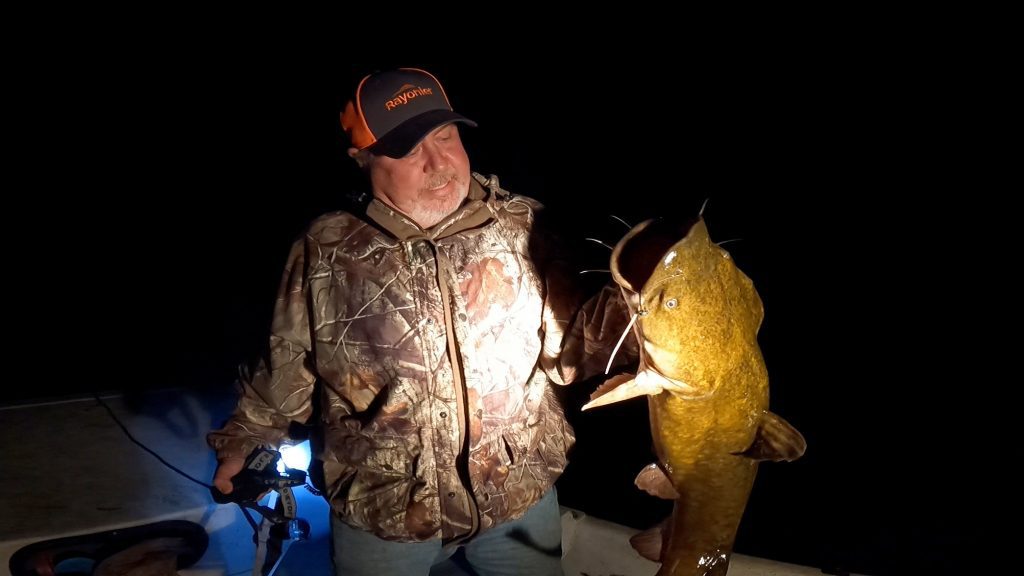

The two local fishermen in the boat were out checking their trot lines. Earlier, they’d caught some of the largest catfish I’ve ever seen up close. Two are invasive flathead catfish, the other a native blue. “Really good eating,” says Flint Norris, holding up a flathead weighing, he approximates, about fifteen pounds.
They invite us to a fish fry tomorrow night, but by then we’ll be over twenty miles away at Owl Creek. We talk about river stewardship, and RiverTrekker Cameron Barton finds she and Flint have a friend in common. We chat for ten or fifteen minutes, and head back to dry our feet by the fire. Another RiverTrek memory made.
What is RiverTrek?
Nine years ago, I was offered the opportunity to kayak down the entire Apalachicola and document it for the Ecology Blog. Back then the blog was called In the Grass, On the Reef, and it focused largely on salt marshes and oyster reefs. I would spend five days following fresh water as it made its way from Jim Woodruff Dam to Apalachicola Bay; there, the fresh meets the salt, creating the mix that gives us the world famous Apalachicola oysters.
Rob Diaz de Villegas is a senior producer for television at WFSU Public Media, covering outdoors and ecology. After years of producing the music program OutLoud, Rob found himself in a salt marsh with a camera, and found a new professional calling as well. That project, the National Science Foundation funded "In the Grass, On the Reef," spawned the award-winning WFSU Ecology Blog. Now in its tenth year, the Ecology Blog recently wrapped its most ambitious endeavor, the EcoCitizen Project.
Rob is married with two young sons, who make a pretty fantastic adventure squad.

